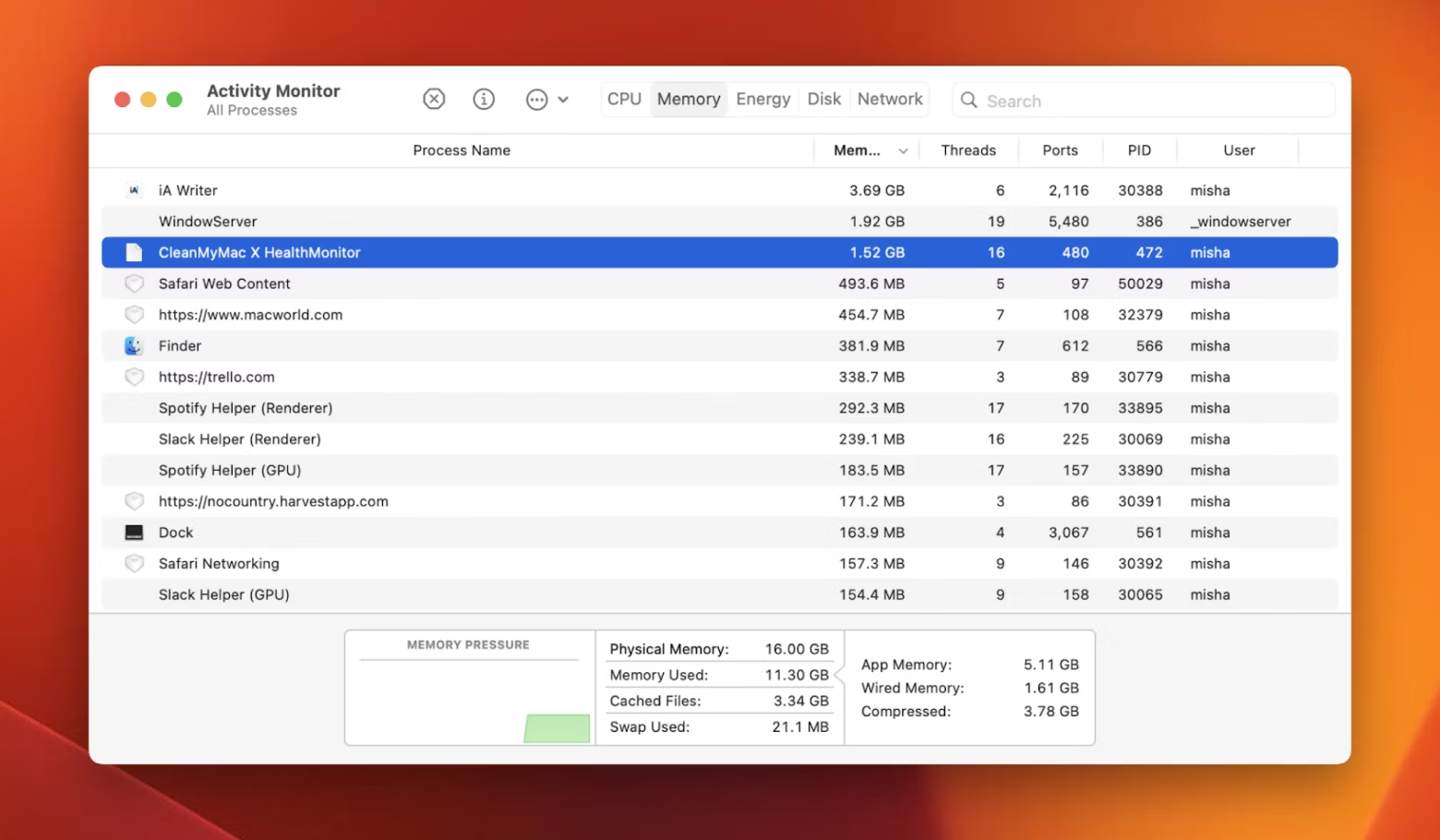Introduction
Dealing with a virus or malware infection on your web browser can be a frustrating and concerning experience. Firefox, a popular web browser known for its speed, privacy features, and customization options, is not immune to these threats. However, with the right knowledge and tools, you can effectively remove viruses from Firefox and restore its performance and security.
In this comprehensive guide, we will walk you through the step-by-step process of removing viruses from Firefox. Whether you've noticed unusual pop-ups, unexpected redirects, or a general decline in browsing performance, taking proactive measures to address these issues is crucial for safeguarding your online experience.
By following the methods outlined in this guide, you can regain control of your Firefox browser and ensure that it remains a secure and reliable platform for accessing the web. From updating Firefox to running a full system scan and utilizing reputable antivirus software, each step is designed to help you eliminate viruses and protect your digital environment.
So, if you've noticed any suspicious behavior or believe that your Firefox browser may be compromised by a virus, don't worry. By the end of this guide, you'll have the knowledge and tools to effectively remove viruses from Firefox and fortify its defenses against future threats. Let's dive in and take the necessary steps to restore your browsing experience to its optimal state.
Step 1: Update Firefox
Keeping your Firefox browser updated is a fundamental step in maintaining its security and performance. Updates often include patches for known vulnerabilities and security enhancements, making it essential to ensure that you are running the latest version of the browser. Here's how you can update Firefox to mitigate potential security risks and improve its overall functionality.
-
Accessing the Menu: To begin, launch your Firefox browser and locate the menu icon in the top-right corner of the window. It is represented by three horizontal lines stacked on top of each other.
-
Selecting "Help": Once you have located the menu icon, click on it to reveal a dropdown menu. From this menu, select the "Help" option, which is denoted by a question mark icon.
-
Choosing "About Firefox": After clicking on "Help," another submenu will appear. Within this submenu, select the "About Firefox" option. This will open a new window displaying information about your current Firefox version and whether any updates are available.
-
Automatic Update Check: Upon selecting "About Firefox," the browser will automatically check for updates. If an update is available, Firefox will begin downloading and installing it. You may need to restart the browser to complete the update process.
-
Manual Update: In some cases, the automatic update check may not detect available updates. If this occurs, you can manually check for updates by clicking the "Check for Updates" button within the "About Firefox" window.
-
Restart Firefox: Once the update process is complete, you will be prompted to restart Firefox to apply the changes. It is important to restart the browser to ensure that the update is fully implemented.
By regularly updating Firefox, you not only benefit from the latest features and improvements but also safeguard your browsing experience against potential security threats. This proactive approach to maintenance helps to fortify your browser's defenses and ensures that you are equipped with the most secure and efficient version of Firefox.
Taking the time to update Firefox is a simple yet crucial step in mitigating security risks and enhancing the overall performance of your browsing experience. By staying vigilant and keeping your browser up to date, you can enjoy a safer and more reliable online environment.
Step 2: Run a Full System Scan
Running a full system scan is a vital step in the process of removing viruses from Firefox. While focusing on the browser itself is important, it's equally crucial to ensure that your entire system is free from malware and other malicious entities that may be impacting Firefox's performance. By conducting a comprehensive system scan, you can identify and eliminate any potential threats that could be affecting your browser and overall computer functionality.
To initiate a full system scan, you'll need to utilize a reputable antivirus or antimalware software. These programs are designed to thoroughly examine your system for any signs of malicious activity, including viruses, trojans, spyware, and other forms of malware. Here's a detailed guide on how to run a full system scan to safeguard your computer and address any potential security concerns:
-
Selecting the Antivirus Software: If you already have antivirus software installed on your computer, launch the program from your desktop or system tray. If you don't have an antivirus program installed, it's essential to acquire one from a trusted source to ensure comprehensive protection.
-
Initiating the Scan: Once the antivirus software is open, navigate to the "Scan" or "Scan Options" section, where you'll typically find the option to perform a full system scan. Select this option to initiate the comprehensive scan of your entire computer, including all files, folders, and system processes.
-
Patience During the Scan: A full system scan may take some time to complete, depending on the size of your hard drive and the speed of your computer. It's important to allow the antivirus software to thoroughly examine every aspect of your system to ensure that no potential threats go undetected.
-
Reviewing Scan Results: After the scan is complete, the antivirus software will present a detailed report of its findings. This report will outline any identified threats, their locations, and the actions that the antivirus program has taken or recommends to address these issues.
-
Taking Action: If the scan reveals the presence of viruses or other forms of malware, it's crucial to follow the recommended actions provided by the antivirus software. This may include quarantining, deleting, or repairing infected files to eliminate the identified threats from your system.
By running a full system scan using reliable antivirus software, you can proactively identify and address any potential security risks that may be impacting your Firefox browser and overall system performance. This thorough approach to system security helps to ensure that your computer remains free from malicious entities, providing a safer and more secure environment for your online activities.
Step 3: Reset Firefox Settings
Resetting Firefox settings can be an effective solution for addressing issues related to viruses, malware, or unwanted browser behavior. By resetting the browser to its default state, you can eliminate problematic configurations, remove potentially harmful extensions, and restore Firefox to a clean and stable condition. This step is particularly valuable when other troubleshooting methods have not yielded the desired results, offering a comprehensive approach to resolving persistent issues.
To reset Firefox settings, follow these steps:
-
Accessing the Menu: Open your Firefox browser and locate the menu icon in the top-right corner of the window. Click on the icon to reveal a dropdown menu.
-
Selecting Help: From the dropdown menu, choose the "Help" option, denoted by a question mark icon.
-
Troubleshooting Information: Within the "Help" submenu, select "Troubleshooting Information." This will open a new tab containing essential troubleshooting details and options.
-
Reset Firefox: In the upper-right corner of the Troubleshooting Information page, you will find the "Refresh Firefox" button. Click on this button to initiate the reset process.
-
Confirmation: A confirmation dialog will appear, outlining the impact of the reset process. This dialog provides information about the data that will be preserved and removed during the reset. To proceed, click the "Refresh Firefox" button.
-
Completion: Once the reset process is complete, Firefox will close and reopen, presenting a clean slate with default settings restored.
It's important to note that resetting Firefox will retain essential information such as bookmarks, browsing history, and saved passwords, while removing extensions and custom settings. This allows you to start afresh with a clean browser environment, free from potentially disruptive elements that may have been introduced by viruses or malware.
By resetting Firefox settings, you can effectively eliminate problematic configurations and remove unwanted extensions that may be contributing to browser instability or security vulnerabilities. This proactive approach provides a fresh start for your browsing experience, allowing you to navigate the web with enhanced security and stability.
In situations where persistent issues or unusual behavior within Firefox persist despite other troubleshooting efforts, resetting the browser settings can serve as a valuable strategy for restoring its functionality and security. This comprehensive approach helps to address underlying issues and create a more secure and reliable browsing environment.
Step 4: Remove Suspicious Add-ons
Add-ons, also known as extensions or plugins, can enhance the functionality of your Firefox browser by providing additional features and customization options. However, some add-ons may be compromised by malware or designed with malicious intent, posing a threat to your browsing security and overall experience. Removing suspicious add-ons is a crucial step in eliminating potential vulnerabilities and ensuring the integrity of your browser.
To remove suspicious add-ons from Firefox, follow these steps:
-
Accessing the Add-ons Manager: Open your Firefox browser and click on the menu icon located in the top-right corner of the window. From the dropdown menu, select "Add-ons" to access the Add-ons Manager.
-
Navigating to Extensions: Within the Add-ons Manager, navigate to the "Extensions" tab. This section displays all installed extensions, allowing you to review and manage their settings.
-
Identifying Suspicious Add-ons: Carefully review the list of installed extensions for any unfamiliar or suspicious add-ons. Look for extensions that you did not intentionally install or those with questionable names or descriptions.
-
Removing Suspicious Add-ons: For each suspicious add-on identified, click on the "Remove" button associated with the respective extension. Confirm the removal when prompted to complete the process.
-
Restarting Firefox: After removing the suspicious add-ons, it is advisable to restart Firefox to ensure that the changes take effect.
By removing suspicious add-ons from Firefox, you can mitigate potential security risks and eliminate any unwanted or compromised extensions that may be impacting your browsing experience. This proactive approach helps to safeguard your browser against malicious entities and ensures that you can navigate the web with enhanced security and peace of mind.
In situations where unusual behavior, intrusive pop-ups, or unauthorized changes to your browser settings are observed, removing suspicious add-ons can serve as an effective strategy for addressing these issues. By maintaining a vigilant approach to managing your browser extensions, you can minimize the risk of exposure to malicious activities and maintain a secure and reliable browsing environment.
Step 5: Clear Firefox Cache and Cookies
Clearing the cache and cookies in your Firefox browser is an essential step in maintaining its performance, privacy, and security. Over time, the accumulation of cached data and stored cookies can impact the browser's speed, consume unnecessary storage space, and potentially expose sensitive information. By regularly clearing the cache and cookies, you can ensure that your browsing experience remains optimized and your privacy is safeguarded.
To clear the cache and cookies in Firefox, follow these simple steps:
-
Accessing the Menu: Open your Firefox browser and locate the menu icon in the top-right corner of the window. Click on the icon to reveal a dropdown menu.
-
Selecting Options: From the dropdown menu, choose the "Options" or "Preferences" setting, depending on your operating system. This will open the Firefox settings menu.
-
Navigating to Privacy & Security: Within the settings menu, navigate to the "Privacy & Security" tab, where you'll find various options related to your browsing privacy and security settings.
-
Clearing Cache: Under the "Cookies and Site Data" section, click on the "Clear Data" button. This will prompt a dialog box to appear, allowing you to select the types of data to clear. Ensure that the "Cached Web Content" option is selected, and then click "Clear" to remove the cached data from your browser.
-
Clearing Cookies: While still in the "Cookies and Site Data" section, you can also choose to manage individual cookies by clicking on the "Manage Data" button. This allows you to view and remove specific cookies associated with websites you've visited.
By clearing the cache and cookies in Firefox, you can effectively remove temporary files and stored data that may impact your browsing experience. This process not only frees up storage space but also helps to protect your privacy by removing potentially sensitive information stored in cookies.
Regularly clearing the cache and cookies in Firefox is a proactive measure that contributes to a smoother and more secure browsing experience. By incorporating this practice into your routine maintenance of the browser, you can ensure that your online activities are conducted with enhanced privacy and efficiency.
Step 6: Use a Reliable Antivirus Software
Utilizing a reliable antivirus software is a critical component of maintaining the security and integrity of your Firefox browser and overall system. While Firefox itself incorporates security features, including built-in phishing and malware protection, an additional layer of defense provided by reputable antivirus software is essential for comprehensive protection against evolving online threats.
When selecting an antivirus software for your computer, it is imperative to choose a trusted and reputable solution from a recognized provider. Look for antivirus programs that offer real-time scanning, automatic updates, and robust threat detection capabilities. These features are essential for identifying and neutralizing viruses, malware, and other malicious entities that may target your browser and system.
By installing and regularly updating a reliable antivirus software, you can benefit from the following key advantages:
-
Real-time Protection: Antivirus software actively monitors your system and web browsing activities, detecting and blocking potential threats in real time. This proactive approach helps to prevent malware and viruses from compromising your Firefox browser and system.
-
Scheduled Scans: Many antivirus programs offer the option to schedule regular system scans, ensuring that your computer, including the Firefox browser and associated files, is routinely checked for any signs of malicious activity.
-
Threat Removal and Quarantine: In the event that a virus or malware is detected, the antivirus software can take immediate action to remove the threat or quarantine it to prevent further damage. This swift response is crucial for safeguarding your browsing experience and system functionality.
-
Protection Against Phishing: Antivirus software often includes features designed to protect against phishing attempts, which can help prevent unauthorized access to sensitive information and enhance your overall online security.
-
Enhanced Browser Security: By integrating with your web browser, antivirus software can provide additional layers of security, such as blocking malicious websites and preventing potentially harmful downloads.
Incorporating a reliable antivirus software into your digital defense strategy is a proactive and essential step in safeguarding your Firefox browser and system against a wide range of online threats. By leveraging the advanced capabilities of reputable antivirus solutions, you can navigate the web with confidence, knowing that your browsing experience is fortified with robust security measures.

























